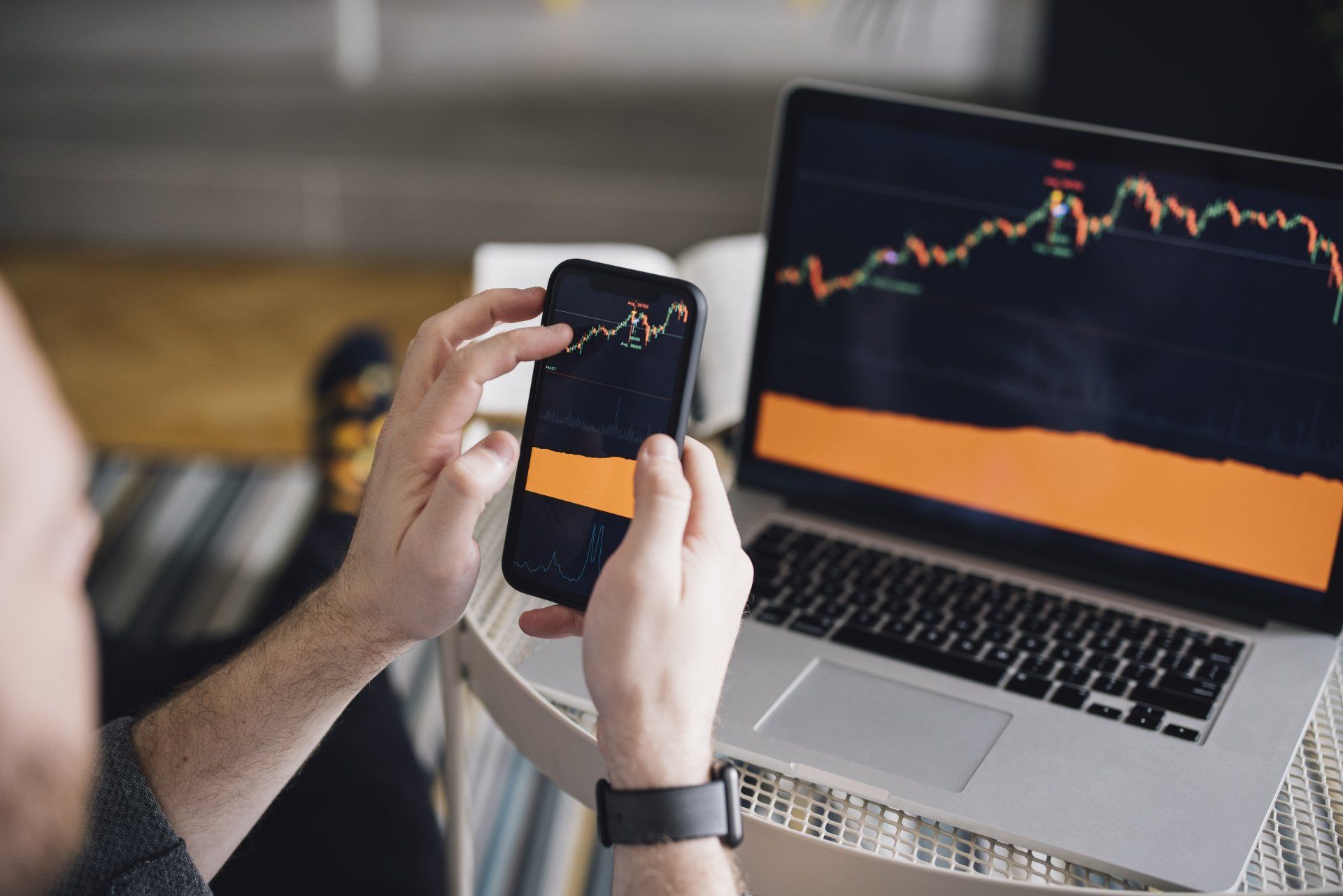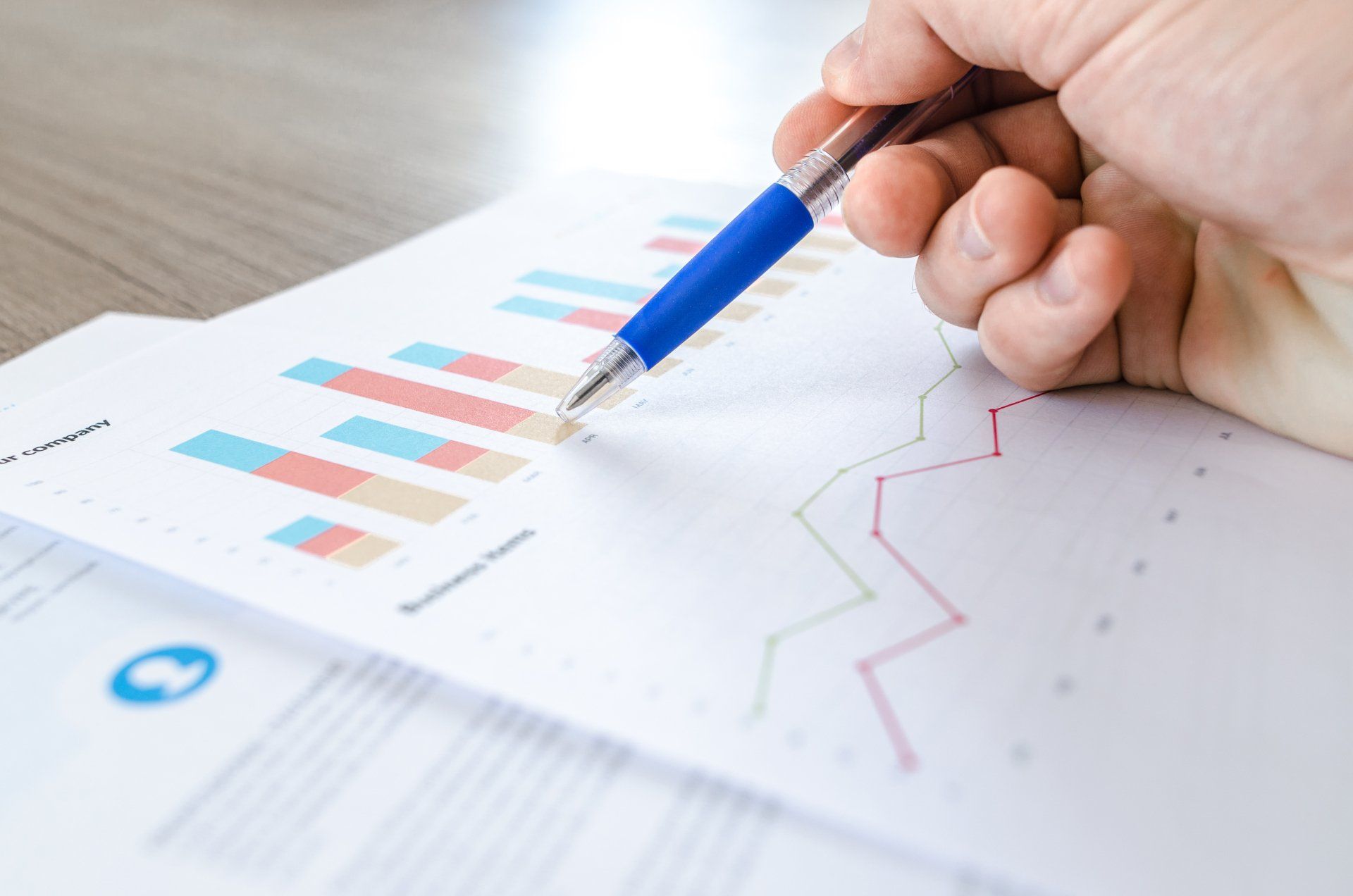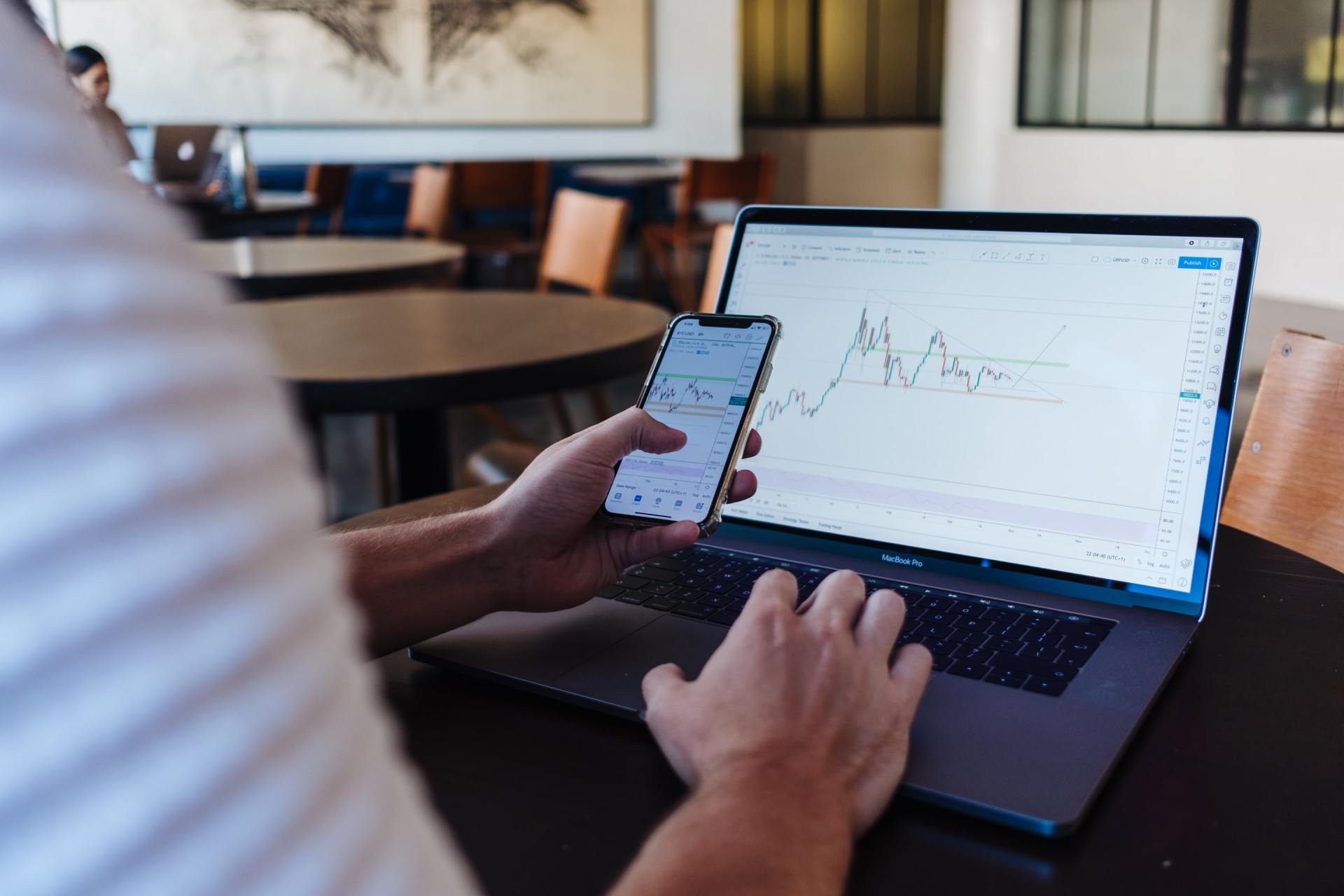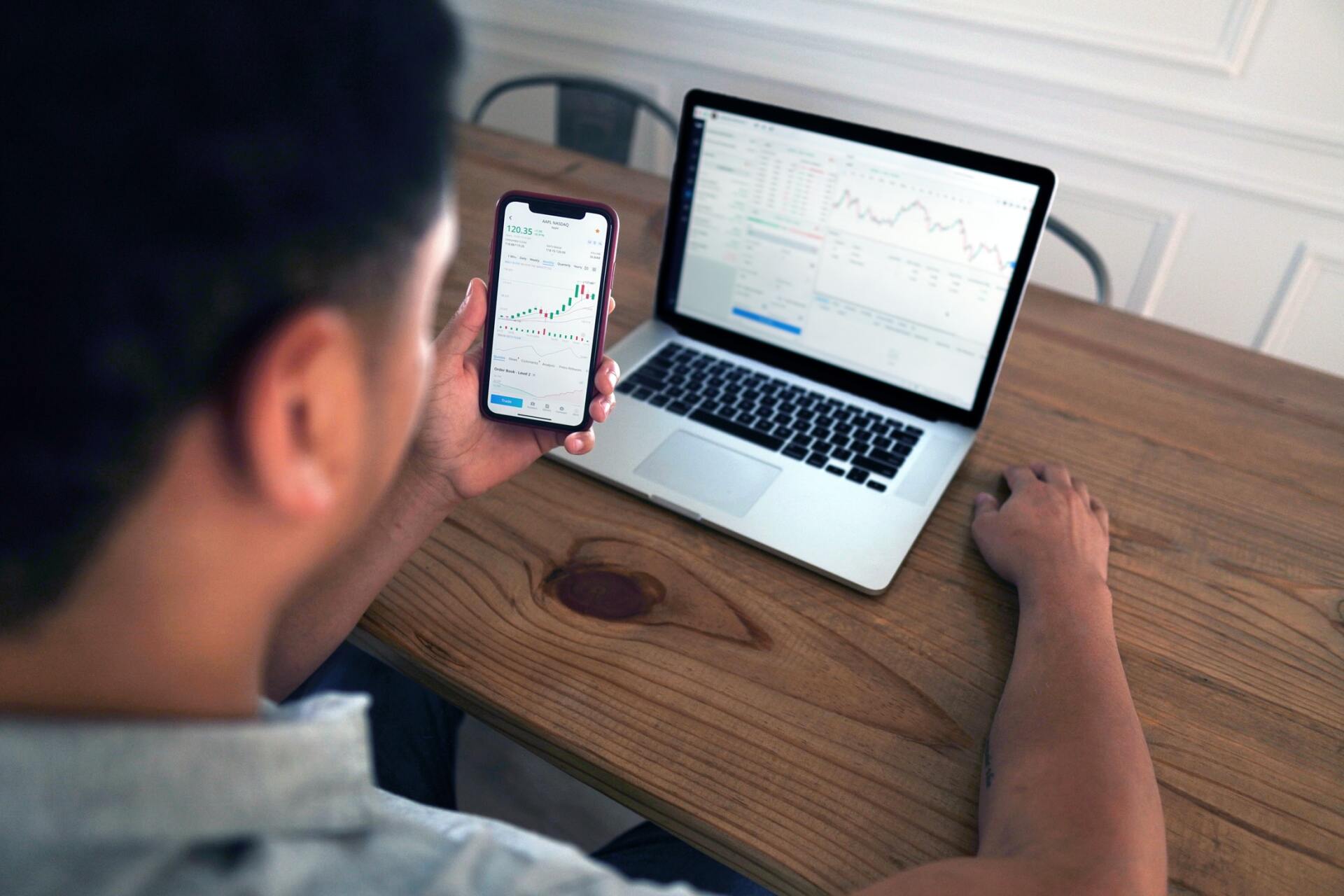Market Commentary | July 2020
THE MARKET
Equity markets continued to recover in July as the S&P 500 has now entered back into positive territory for the year.
The Dow Jones Industrial Average (DJIA) was up 2.38% for the month but is still down 7.39% on the year. The NASDAQ composite is now up 19.76% on the year after finishing the month of July up 6.83%.1
If you’re wondering why there is a large discrepancy in performance among the indices, let’s revisit the image above. It is important to keep in mind that the S&P 500 is market cap weighted, meaning it is more greatly affected by larger companies, whereas the DJIA is price weighted and is only affected by stock price movements. While Microsoft and Apple represent the two largest companies in the DJIA, companies like Facebook, Alphabet, and Amazon are likely never to be included in the DJIA because of their high stock prices.3 Each of those three companies has a very large market cap and their stock prices are up on the year: Amazon by over 30%.4 The NASDAQ is also market cap weighted and is heavily weighted towards technology companies that have been less impacted by the virus leading to the index’s outperformance relative to the S&P 500 and the DJIA.
Even though the S&P 500 is now positive for the year, it is wise to temper expectations regarding market performance for the remainder of 2020. The yield on the 10-year treasury was 0.56% on August 3rd, which is well below the 1.88% yield from earlier this year on January 2nd.5 The yield dropped below 1% for the first time in history in March of this year.6 The low 10-year treasury yield means that investors are still looking for safety as uncertainty remains in the equity markets. To be clear, this isn’t a doom and gloom expectation for the market in the short term, just one that recommends having reasonable expectations. There will be volatility and there is room for a market pull back. Be prepared for the market volatility and understand why you have a well thought out financial plan to help guide you through the ebbs and flows to come.
THE VIRUS AND THE ECONOMY
While the headlines in July varied from the weather to the election to social issues, the country and our economy are both still centered around Covid-19. The virus seems to be getting worse in July after a decrease in new cases throughout May. As you can see in the image below, cases began to taper off in May before steadily increasing in June and July. Some would attribute that to the increase in tests being completed. However, the orange line shows positive cases as a percentage of tests being completed, and you can see that the line begins to increase in June and July.
While people can interpret the virus numbers in different ways and they can view the virus on different ends of the threat spectrum, we cannot deny that the virus and charts like these have a direct effect on the economy. As long as the virus is in the news and is still some sort of a threat to citizens, it will impact our economy, and the U.S. GDP number in the second quarter reflects that.
Though the second quarter economic numbers weren’t as bad as initially feared, the United States suffered its biggest quarterly GDP decrease in history. U.S. GDP fell 32.9% in the months from April through June which comes on the heels of a 5% drop in the first quarter. To put those numbers into perspective, the worst decrease in GDP during the 2008 financial crisis was negative 8.4% in the fourth quarter of 2008. The largest drop before that was 10% in the first quarter of 1958. As stated by Peter Boockvar, Chief Investment Officer of Bleakley Advisory Group, “Bottom line, the numbers of course are alarming but all self-inflicted with about half the quarter reflecting almost full shutdown and the other half the slow reopening. That said, it does reflect the hole out of which we now need to climb out of as we rebound in Q3 and Q4.” 8
As of August 3rd, U.S. GDP is projected to increase by nearly 20% in the third quarter.9 That is a large number, but not near as large as it may seem. When you fall by over 30%, the 20% bounce back is based on your newly established lower level. For example, if you fall from 100 down to 70, you have had a 30% drop. Now, follow up that drop with 20% growth. The 20% growth is based on the level of 70, not on 100. In this example, a 20% increase would result in a new level of 84, which is a 20% increase from 70. You simply cannot just subtract 30 and then add 20. It will take much longer to get back to pre-virus levels of GDP than one may initially think, but we are hopeful to get there by the end of 2021.10 However, there are concerns with our ability to recover at a high enough pace to achieve that goal.
In the image to the right, you can see that activity did start to pick up in the beginning of May but that it has slowly evened out and we aren’t anywhere near pre-virus levels for much of the mobility data. Mortgage applications are above the initial level simply because they will even out over time. People who were planning to purchase a home in March and April simply put it off until the summer months, and those planning to purchase in the summer are still planning to in that timeframe. Thus, why mortgage applications are above their pre-virus levels. Credit and debit card transactions have slowly come back due to e-commerce, but they are still firmly below pre-virus levels. The bottom four lines represent the mobility data of our economy regarding travel, hotel stays, and dining out. As the above image shows, the economy has begun to flatten out, and our concern now, is how to prevent it from dropping again.
That prevention starts with containing the virus. The global consensus seems to be that things will not go back to “normal” until there is a widely distributable vaccine.10 There are many questions regarding the effectiveness of a vaccine, but for the purpose of this reading, let’s pretend that a widely distributable vaccine solves our issue. Researchers are racing to produce a viable vaccine that is deemed to be widely distributable hopefully in the second half of 2021.12
With a slightly better grasp on the virus now than in March, the economy has started to open, but for how long? Businesses are partially open, but there are already signs of restrictions being put back in place. Schools are delaying the start to the school year or offering online classes. College campuses are closing. Professional sports are being postponed and are in jeopardy of cancelation. No matter what your perspective is on the matter, the virus is still preventing our economy from fully opening and the markets will be looking for another stimulus package to bridge the gap until after the election. As we’ve mentioned before, the stimulus packages are designed to keep the economy in suspended animation until things can go back to normal, which we established is likely post-vaccine and still many months away. We likely don’t need something to the extent of the previous packages passed, but we will still be looking to the government for aid.
As Chiefs Global Strategist at J.P. Morgan, Dr. David Kelly states, “One significant difference between the recession of 2020 and recessions in previous decades has been the willingness of the Federal Government to provide very substantial support to the economy. The four coronavirus relief bills passed so far have had a combined price tag of $2.4 trillion. We expect, despite a current stalemate, that Congress and the Administration will agree to a further bill in the first half of August, adding perhaps another $1.5 trillion to the total. Moreover, after the election an additional bill will likely be needed to tide the economy over until the widespread distribution of a vaccine.” 10
Our economy is healing, and we are becoming used to this social distancing type of economy, but we still very much need to monitor the virus and our country’s fiscal response to the economic issues at hand.
MARKET OUTLOOK
To come full circle, we are in a headline driven society and this year will continue to be volatile for the markets. In what is usually a quiet month for the markets as the summer ends and school years begin, August will likely experience more sharp short-term movements than normal. There will be announcements about new therapeutic drugs and progress on a vaccine. Announcements regarding school years and sports of all levels. The November Presidential Election gets closer every day as there seems to be a larger political divide in this country than most can remember. These issues are evidence that it is likely to be a volatile year.
It is important to stay disciplined according to your financial plans, and not panic because of short term market movements regarding one of the above headlines. Yes, there will be lasting consequences depending on which party wins the presidency, and it is important to understand the policies that each side brings to the table, but your long term financial plan is put in place because of these issues. We still recommend maintaining a balanced and diversified portfolio according to your risk tolerance. Don’t hesitate to reach out so that we can revisit your financial plan in order to make sure that you have your assets invested accordingly. Some of your assets will be positioned to take advantage of long term market growth as they will be able to withstand the volatility, while others will be positioned for safety in order to ensure that you have the necessary income to achieve your goals.
1 https://www.investing.com/indices/
4 https://finance.yahoo.com/quote/AMZN/
6 https://www.cnn.com/2020/03/03/investing/10-year-treasury-yield-record-low/index.html
8 https://www.cnbc.com/2020/07/30/us-gdp-q2-2020-first-reading.html
9https://www.frbatlanta.org/-/media/documents/cqer/researchcq/gdpnow/RealGDPTrackingSlides.pdf
10 https://am.jpmorgan.com/us/en/asset-management/gim/adv/insights/week-ahead
11 https://am.jpmorgan.com/us/en/asset-management/gim/adv/insights/investor-questions
12 https://www.nytimes.com/interactive/2020/science/coronavirus-vaccine-tracker.html
21
Returns are based on the S&P 500 Total Return Index, an unmanaged, capitalization-weighted index that measures the performance of 500 large capitalization domestic stocks representing all major industries. Indices do not include fees or operating expenses and are not available for actual investment. The hypothetical performance calculations are shown for illustrative purposes only and are not meant to be representative of actual results while investing over the time periods shown. The hypothetical performance calculations for the respective strategies are shown gross of fees. If fees were included returns would be lower. Hypothetical performance returns reflect the reinvestment of all dividends. The hypothetical performance results have certain inherent limitations. Unlike an actual performance record, they do not reflect actual trading, liquidity constraints, fees and other costs. Also, since the trades have not actually been executed, the results may have under- or overcompensated for the impact of certain market factors such as lack of liquidity. Simulated trading programs in general are also subject to the fact that they are designed with the benefit of hindsight. Returns will fluctuate and an investment upon redemption may be worth more or less than its original value. Past performance is not indicative of future returns. An individual cannot invest directly in an index.
This material has been prepared for information and educational purposes and should not be construed as a solicitation for the purchase or sell of any investment. The content is developed from sources believed to be reliable. This information is not intended to be investment, legal or tax advice. Investing involves risk, including the loss of principal. No investment strategy can guarantee a profit or protect against loss in a period of declining values. Investment advisory services offered by duly registered individuals on behalf of ChangePath, LLC a Registered Investment Adviser.
Source (2)
"Even though the S&P 500 is now positive for the year, it is wise to temper expectations regarding market performance for the remainder of 2020."
Source (7)
"As of August 3rd, U.S. GDP is projected to increase by nearly 20% in the third quarter."
Source (11)
" As we’ve mentioned before, the stimulus packages are designed to keep the economy in suspended animation until things can go back to normal, which we established is likely post-vaccine and still many months away."
"The four coronavirus relief bills passed so far have had a combined price tag of $2.4 trillion."
"Don’t hesitate to reach out so that we can revisit your financial plan in order to make sure that you have your assets invested accordingly."









P:
888.798.2360 F:
913.661.1183
6330 Sprint Pkwy Suite 400, Overland Park, KS 66211
Disclosure: Continuity planning offered through CreativeOne Wealth, LLC and CreativeOne Securities, LLC. CreativeOne Wealth, LLC. advisory services offered through CreativeOne Wealth, LLC, a Registered Investment Adviser. CreativeOne Securities, LLC. Member FINRA/SIPC and an Investment Advisor.
Privacy Policy | ADV Part 2A | Form CRS
© 2023 Creative One Marketing Corporation, CreativeOne Wealth, LLC and CreativeOne Securities, LLC.




